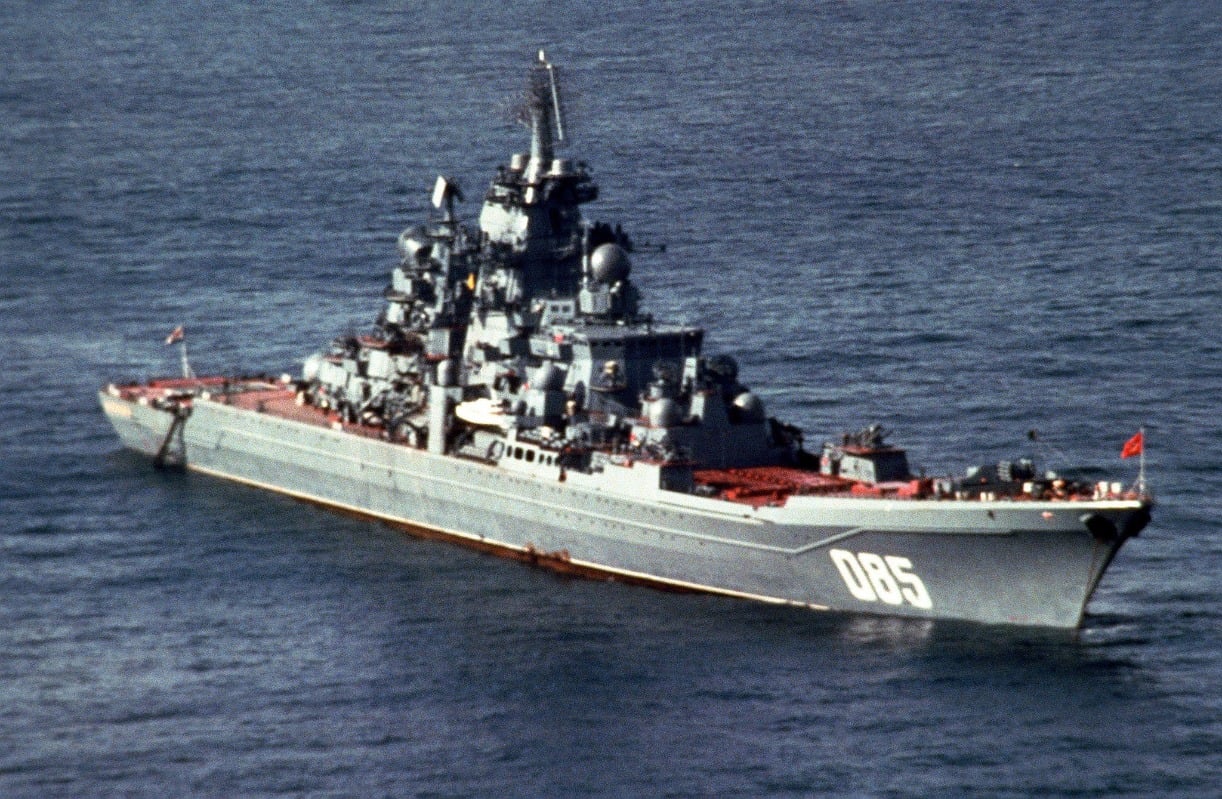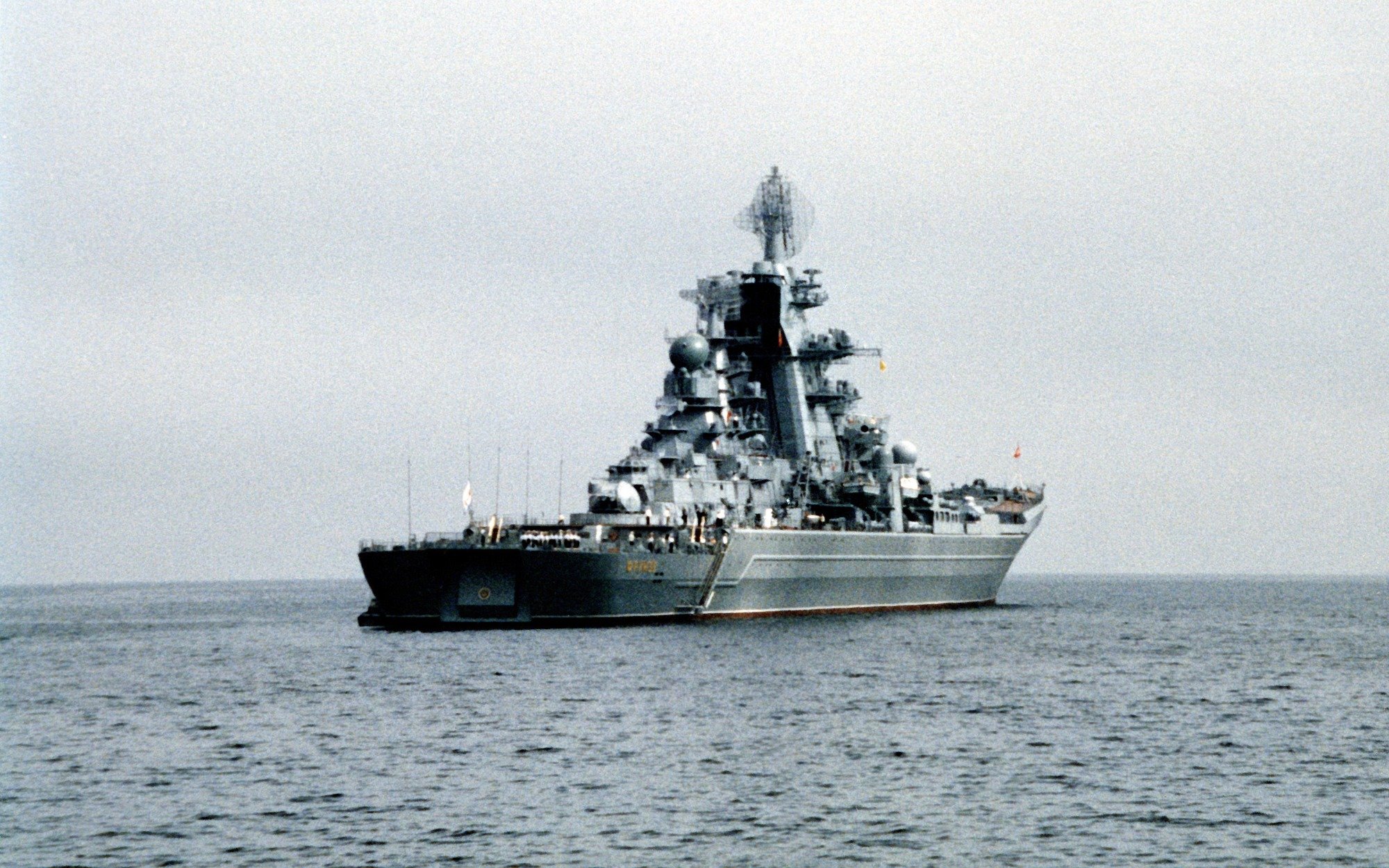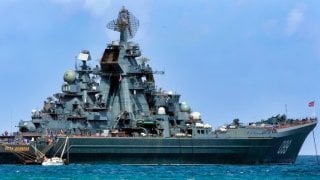Russia's Kirov-Class Battlecruiser Could Make the Ultimate 'Comeback'
Despite earlier speculation that the Kirov-class battlecruiser Admiral Nakhimov would never sail again, the Russian Navy has announced plans for the warship to begin factory trials this week. However, the trials will rely on auxiliary engines, as the vessel’s nuclear reactors remain inactive.
What You Need to Know: Despite earlier speculation that the Kirov-class battlecruiser Admiral Nakhimov would never sail again, the Russian Navy has announced plans for the warship to begin factory trials this week. However, the trials will rely on auxiliary engines, as the vessel’s nuclear reactors remain inactive.

-The Admiral Nakhimov, which has been undergoing modernization since 2015, has repeatedly missed deadlines, raising doubts about its operational readiness.
-While Moscow appears determined to demonstrate progress, questions linger about the ship’s combat capabilities and the rationale behind this latest move.
Kirov-Class Battlecrusier Reboot: Russia Claims Admiral Nakhimov Will Set Sail After All
The rumors of the demise of Admiral Nakhimov may have been greatly exaggerated. Admiral Pavel Stepanovich Nakhimov, the hero of the Battle Sinop, is very much dead – as he was mortally wounded after being shot by a marksman in that famed engagement during the Crimean War.
The Russian Navy's nuclear-powered battlecruiser named in honor of Nakhimov may not be so mortally injured.
Just days after multiple outlets (including a story from this reporter) suggested that the Kirov-class warship would never sail again, the Kremlin made the surprise announcement on Tuesday that suggests otherwise. According to a source at the Sevmash Shipyard, the Project 11442M cruiser – which was first laid down for the Soviet Navy at the end of the Cold War, yet, never complete – could finally begin factory trials as early as later this week.
The Nuclear-Powered Battlecruiser Will Run on Auxiliary Power
Even if the vessel does leave port, the warship's nuclear reactors will remain inactive, which puts into question why the Russian Navy is sending the ship to sea – apart from proving Western media wrong!
"In the coming days, the cruiser will leave Sevmash Shipyard and will sail out for several days for trials. Auxiliary engines will power the warship," a source in the Russian shipbuilding industry told state media outlet Tass.
The unnamed source had said the warship's two nuclear reactors would be launched after Admiral Nakhimov returned to the shipyard, and even Tass acknowledged it had no confirmation of the report. This latest update contradicts past claims made by Russian officials.

"A Navy source earlier said the reactors were to be launched in late November. Another shipbuilding source said the warship would undergo degaussing this year without sailing out," Tass added.
Missed Deadlines – Nothing New For Russia
Admiral Nakhimov, the third battlecruiser of the Russian Navy's Kirov class first entered service with the Soviet Navy in 1988 as the Kalinin. Following the dissolution of the Soviet Union, in 1992 the nuclear-powered surface combatant was renamed for the aforementioned Pavel Nakhimov.
Though it was developed on a voyage to the Mediterranean in 1991, after the end of the Cold War, the battlecruiser was rarely deployed and has been languishing in drydock since 1999.
It had seemed that Moscow would retire and even scrap the vessel, but in 2006, the Kremlin announced a plan to modernize the vessel. However, work only began on the Cold War-era warship in 2015.
At that time, a goal was set for the warship to begin sea trials by the end of 2018. When the Kremlin failed to meet that deadline, questions were raised as to whether Admiral Nakhimov would actually return to service. Then in 2022, it announced that a new delivery date was set for 2023 but later pushed back to 2024.
This past August, Russian Navy officials said the ship would begin its factory sea trials on November 15. That date has passed, and the vessel became the subject of mockery once again. Thus, almost on cue, officials suggested the ship would head to sea.
Yet, as noted, sending a nuclear-powered warship to sea with auxiliary engines only serves to prove it won't sink – or at least that Russian officials believe it won't sink. One can only speculate that the various systems aren't likely operational.
It would appear that Russia is simply determined to prove the reports wrong – for whatever that is worth.
Author Experience and Expertise: Peter Suciu
Peter Suciu is a Michigan-based writer. He has contributed to more than four dozen magazines, newspapers, and websites with over 3,200 published pieces over a twenty-year career in journalism. He regularly writes about military hardware, firearms history, cybersecurity, politics, and international affairs. Peter is also a Contributing Writer for Forbes and Clearance Jobs. You can follow him on Twitter: @PeterSuciu. You can email the author: [email protected].
Image Credit: Creative Commons and/or Shutterstock.
From the Vault


